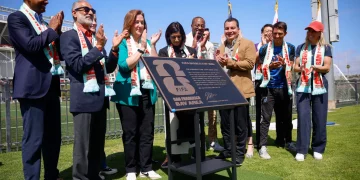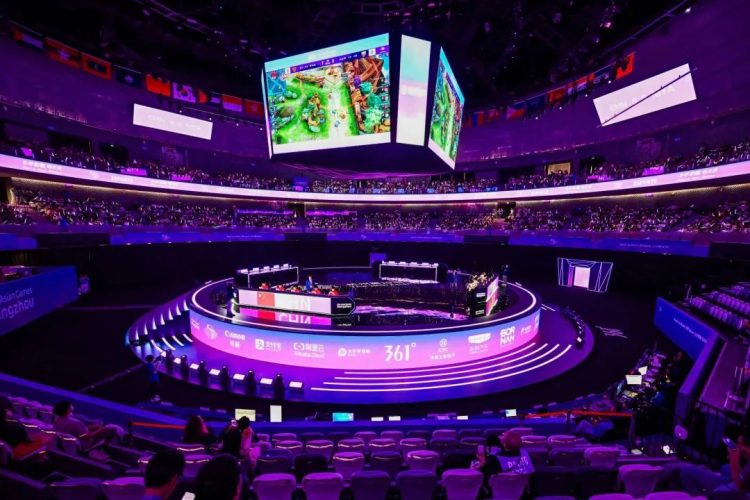Introduction: The Rise of Esports
In the past few decades, electronic sports (esports) have rapidly transformed from a niche hobby into a multi-billion-dollar industry with millions of fans worldwide. Esports competitions, which once took place in small LAN (Local Area Network) parties or obscure online communities, now fill massive stadiums, broadcast on major streaming platforms like Twitch and YouTube, and attract sponsorships from global corporations. From League of Legends to Dota 2, and from Fortnite to Valorant, the popularity of competitive video gaming has grown at an exponential rate.
But as esports continues to rise, a burning question remains: Can esports truly replace traditional sports as the global mainstream?
The world of traditional sports, from football (soccer) to basketball, tennis, and American football, has long held the title of the most dominant form of entertainment worldwide. These sports boast centuries of history, millions of passionate fans, and deeply ingrained cultural significance. Yet, the digital age has introduced a new kind of competition and a younger generation that embraces digital experiences.
In this article, we’ll explore whether esports can truly challenge or even replace the longstanding dominance of traditional sports, examining the growth of esports, its challenges, the cultural shift, and the complex interplay between these two sports worlds.
Section 1: The Growth of Esports
1.1 The Meteoric Rise of Esports
Esports began as a niche hobby for video game enthusiasts, but it has quickly become a global entertainment phenomenon. According to a 2022 report by Newzoo, the global esports industry was valued at over $1.38 billion, and it is expected to grow significantly in the coming years. Esports tournaments, such as The International (Dota 2), the League of Legends World Championship, and CS:GO Major events, now draw viewership numbers that rival traditional sports events.
- Esports Viewership: Esports viewership has seen a tremendous rise. The League of Legends World Championship in 2021 attracted over 4 million peak concurrent viewers, surpassing the viewership of major sports finals such as the NBA Finals or Super Bowl. In 2020, esports became one of the few entertainment sectors to thrive during the COVID-19 pandemic, as fans flocked to digital platforms for entertainment in the absence of live sporting events.
- Massive Prize Pools: Esports prize pools have reached staggering amounts. For example, The International 2021 (Dota 2) featured a prize pool of over $40 million, one of the largest in competitive sports. This financial backing from sponsors, players, and fans has positioned esports as a sustainable and highly lucrative industry.
- Corporate Investment: The esports market has attracted investments from major global companies. From tech giants like Intel, Razer, and Samsung, to non-endemic brands like Coca-Cola, Nike, and even Mercedes-Benz, corporate sponsorships have been crucial to esports’ financial success. The investment of traditional sports organizations, such as NBA teams owning esports franchises like Team Liquid and 100 Thieves, also signals the growing crossover between these worlds.
1.2 Esports as a Global Cultural Movement
Esports’ appeal goes beyond simply being a form of entertainment. It has developed into a cultural phenomenon. While traditional sports are culturally rooted in specific regions or countries, esports has a global appeal, thanks to the nature of online gaming and streaming. Games like Fortnite, Valorant, and Apex Legends have massive, global fanbases, with players from all over the world able to compete against each other online.
- Global Communities: Esports communities are not bound by geographical or linguistic barriers. Online platforms like Twitch and YouTube Gaming provide a place where fans from all corners of the globe can watch their favorite players, form communities, and engage in discussions, transcending the borders that typically limit traditional sports fandom.
- Generational Appeal: While traditional sports often cater to older generations, esports resonates with younger demographics, particularly Generation Z and Millennials. According to a Statista report, nearly 80% of esports viewers are between the ages of 16 and 34, a demographic highly engaged with digital and interactive media. This shift has led to a generational divide where younger fans may increasingly prefer watching live streams or gameplay over traditional sports broadcasts.
Section 2: The Challenges Esports Faces in Replacing Traditional Sports
2.1 The Traditional Sports Legacy
Despite esports’ explosive growth, there are several factors that make the idea of esports replacing traditional sports extremely challenging:
- Historical and Cultural Significance: Traditional sports have a centuries-long legacy, embedded in national and international cultures. Football dates back to the late 19th century, while basketball and baseball have deep roots in countries like the United States. These sports are often passed down through generations, with families bonding over games, rivalries, and traditions. The Olympic Games and World Cups have provided a stage for countries to showcase their sporting prowess for over a century. These traditions are deeply ingrained and difficult to replace.
- Global Fanbase and Social Integration: Traditional sports often play a central role in bringing people together in local and global communities. Football matches are viewed in packed stadiums, while fans gather in bars and cafes to cheer on their teams. For instance, the FIFA World Cup and Super Bowl attract not only millions of television viewers but also huge crowds to stadiums, reinforcing the social aspect of traditional sports. This level of social integration is difficult to replicate in esports, where the majority of interactions happen online.
2.2 The Infrastructure of Traditional Sports
Traditional sports benefit from established infrastructures that esports currently lacks:
- Stadiums and Venues: Traditional sports have dedicated stadiums and venues, which are a significant part of the sport’s appeal. Major sports events like the NBA Finals, Champions League Final, or Super Bowl attract millions of fans to packed arenas. Esports, on the other hand, while hosting massive tournaments in venues like The Arthur Ashe Stadium or The Arena of Valor Championships, still lacks the same widespread infrastructure. While esports events draw crowds, these venues are not as ubiquitous as those in traditional sports.
- Broadcasting and Mainstream Media: Traditional sports have established relationships with global broadcasting networks, such as ESPN, NBC, Sky Sports, and BBC, ensuring they are accessible to billions of viewers across the world. Esports, in contrast, primarily relies on streaming platforms, which, while popular, do not yet reach the mainstream television audience in the same way. Although companies like Riot Games and Activision Blizzard have secured deals with television broadcasters, esports’ transition to traditional media has been slow.
2.3 The Intangible Nature of Esports
Unlike physical sports, esports can sometimes be seen as less relatable to the general public. Traditional sports provide a tangible connection between fans and athletes, as fans can physically attend events and witness the prowess of the players in real-time. Esports, on the other hand, is often seen as an intangible, digital competition. This disconnect may be a barrier for many people, especially those from older generations who value the physicality of sports.
- Physical Activity: One key aspect of traditional sports is the physical activity involved. Sports like football, basketball, and swimming require athletes to demonstrate physical strength, agility, and endurance. Esports, while requiring hand-eye coordination, strategic thinking, and mental stamina, does not offer the same physical connection to the viewer. For some, this is a critical element of why traditional sports are superior.

Section 3: The Synergy Between Esports and Traditional Sports
While esports may not replace traditional sports entirely, there is ample opportunity for synergy between the two. Traditional sports leagues are increasingly acknowledging the growing influence of esports and exploring ways to integrate gaming culture into their businesses.
- Esports as a Complement to Traditional Sports: Many sports organizations are embracing esports as a complementary industry. For example, FC Barcelona, Manchester City, and Paris Saint-Germain all have esports divisions, and some clubs have even established their own esports teams. These partnerships provide a way for sports organizations to engage with younger, digitally-native audiences who may not yet be interested in traditional sports but could be drawn into the world of football esports.
- Cross-Promotion and Digital Engagement: Traditional sports teams and leagues are also engaging in cross-promotion with esports tournaments and video game developers. NBA 2K has its own esports league, eMLS involves professional FIFA players, and the FIFA esports World Cup brings together both digital and physical football fans. This convergence could help both industries grow by sharing fanbases and enhancing the viewing experience for everyone involved.
Conclusion: A Hybrid Future for Sports and Esports
While esports may not fully replace traditional sports as the global mainstream, it has proven itself as a legitimate contender for global attention. The rapid growth, cultural integration, and massive fanbase of esports suggest that the future of sports entertainment will be increasingly hybrid, with traditional sports and esports coexisting and even benefiting from each other’s success.
The question of whether esports can replace traditional sports depends on several factors, including cultural acceptance, gener ational shifts, and technological advancements. However, as we look to the future, it seems likely that esports and traditional sports will each carve out their own space in the global sports landscape, coexisting side-by-side and continuing to push the boundaries of what sports entertainment can be in the 21st century.


































Discussion about this post